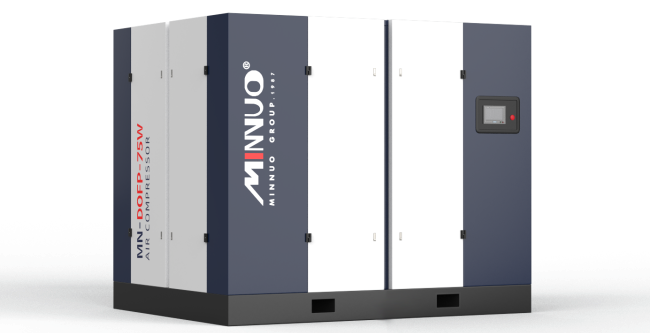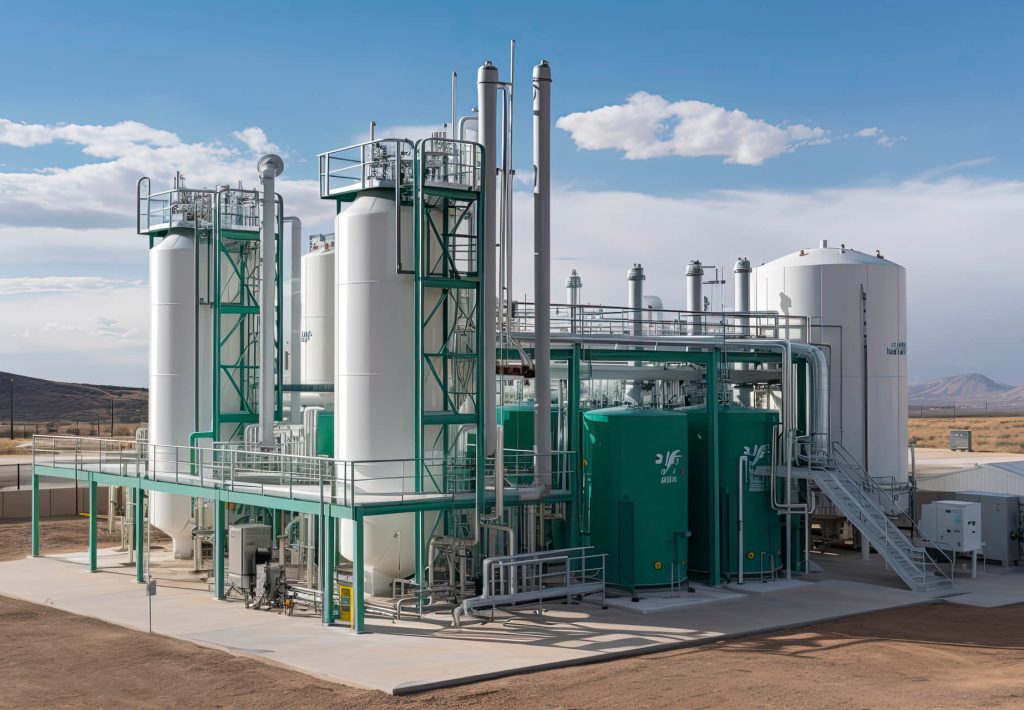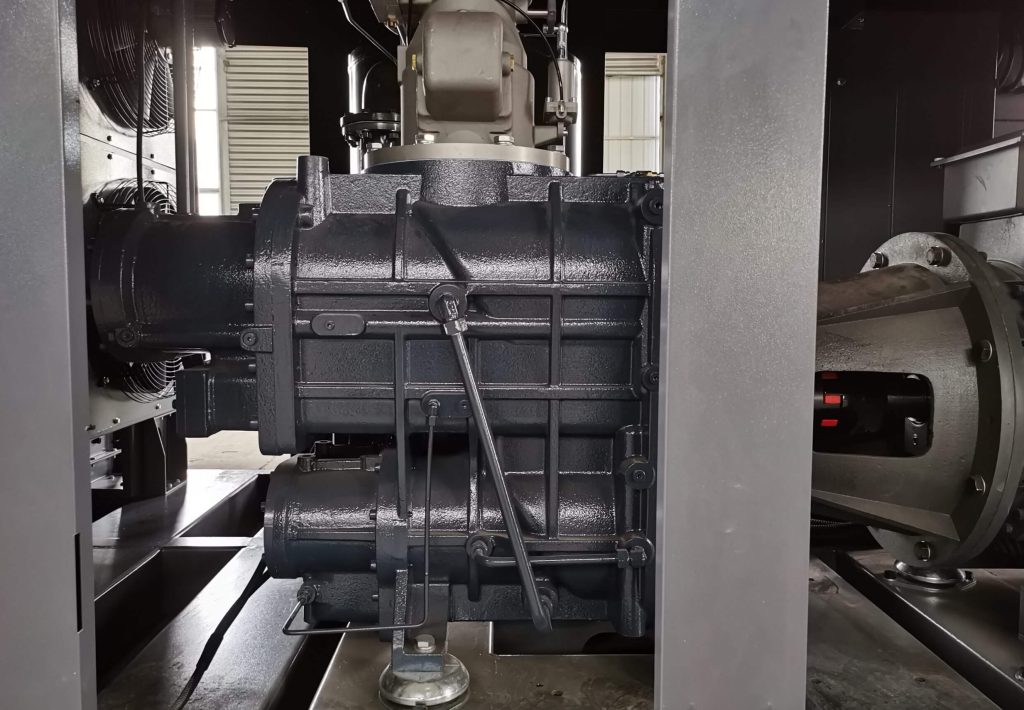In industrial automation and manufacturing, air compressors play a crucial role. Their operation depends on complex electrical control systems. Circuit malfunctions can disrupt normal operations, cause production stoppages, increase energy consumption, and pose safety hazards. This article comprehensively presents the components, working principles, common electrical faults, and troubleshooting methods of air compressor circuits, serving as a one-stop technical reference.
The air compressor circuit system consists of the main power circuit, control circuit, protection circuit, start control circuit, and PLC human-machine interface. These are responsible for the entire process of startup, operation, protection, and shutdown. The working principle is to use pressure signals to drive contactors for automatic loading and unloading, with protective devices cutting off the power in case of faults. Common issues include failure to start, frequent tripping, pressure control failure, frequent contactor action, and incorrect or missing phase sequences. These must be accurately handled through power inspection, component testing, line checking, and PLC diagnostics. Regular maintenance, clear labeling, and PLC backups are key to fault prevention.

I. Basic Components of Air Compressor Circuit Systems
The air compressor circuit mainly consists of the following parts:
- Main Power Circuit: It provides power for the main motor, usually using three-phase 38, 0V AC. The main power passes through the air switch (circuit breaker) into the control cabinet, and then the motor is controlled via contactors.
- Control Circuit: It is used to start and stop the motor and realize automatic control according to pressure settings. This includes a transformer (to convert main voltage into control voltage), relays, contactor coils, thermal relays, time relays, etc.
- Protection Circuit: It monitors the working status to prevent faults like overload, abnormal voltage, phase loss, and overheating. Common protective components include overload protectors, phase-loss protectors, and phase-sequence protectors.
- Start Control Circuit: Common start methods include direct start, star-delta start, autotransformer reduced-voltage start, and variable frequency start. Each has a different circuit structure suitable for different power levels.
- HMI and PLC Control System: High-end compressors are usually equipped with PLC automatic control systems and touch screens, supporting timed start/stop, remote monitoring, automatic unloading, and fault alarms.
II. Detailed Working Principle of Air Compressor Circuits
Taking a screw air compressor driven by a three-phase asynchronous motor as an example:
- Startup Phase: When the start button is pressed, the control circuit is energized, the start relay operates, the main contactor closes, and the motor begins to run. If using star-delta starting, the star contactor is energized first, then automatically switches to delta after a set time for reduced-voltage startup.
- Running Phase: Once started, the pressure switch monitors the pressure in the air tank. When the pressure is below the lower limit, the contactor remains closed, and the motor runs to load the compressor. When pressure reaches the upper limit, the control circuit disconnects the main circuit or switches to unload mode.
- Protection Control: If overload, phase loss, phase error, or overheating occurs during operation, the corresponding protection device will act, cutting off power and triggering fault indicators via lamps or screen messages to prevent equipment damage.
- Shutdown Phase: When the stop button is pressed manually or the system automatically shuts down due to high pressure, the control circuit disconnects, the contactor releases, and the motor stops.
III. Common Electrical Faults and Troubleshooting Methods
1. Air Compressor Fails to Start
Possible Causes:
- Power not connected or phase loss.
- Control voltage fault (e.g., burned transformer, blown fuse).
- Start button damaged or poor contact.
- Thermal relay tripped due to overload.
- Damaged contactor or control relay.
Solutions:
- Use a multimeter to check each phase voltage; ensure balanced three-phase power.
- Check transformer output; replace if burned or fuse is blown.
- Replace or clean the start button.
- Manually reset thermal relay and check motor load.
- Inspect contactor coil; replace if faulty. Do the same for relays.
- If PLC is present, check fault codes and reset before restarting.
2. Frequent Tripping
Possible Causes:
- Motor overload or mechanical jam.
- Worn bearings or faulty load equipment.
- Thermal relay set too low.
- Burnt or loose contactor points.
- Internal short circuit or poor insulation.
Solutions:
- Measure motor current and compare with rated value; inspect load components.
- Replace worn bearings.
- Reset thermal relay according to actual load.
- Replace burnt contactors; clean dust and oil in the control cabinet.
- Use a megohmmeter to test insulation; repair as needed.
3. Pressure Control Failure
Possible Causes:
- Damaged or misconfigured pressure sensor.
- PLC program fault or signal interruption.
- Loose or shorted control wires.
- Contactor sticking.
Solutions:
- Verify pressure switch setting and signal output; replace and recalibrate sensors if faulty.
- Redownload correct PLC program; check wiring for signal issues.
- Tighten or repair loose/disconnected wires.
- Replace stuck contactor; consider limit switches as prevention.
4. Frequent Contactor Activation
Possible Causes:
- Unstable control power or voltage fluctuations.
- Low control voltage.
- Aging contactor coil.
- Intermittent control signal from faulty buttons or contacts.
Solutions:
- Monitor voltage with multimeter; install a stabilizer if needed.
- Check wiring and transformer output; replace aged components.
- Replace coil to restore electromagnetic force.
- Inspect and repair faulty buttons or connections.
5. Phase Sequence or Phase Loss Alarms
Possible Causes:
- Incorrect power wiring sequence.
- One-phase line blown or poor contact.
- Faulty or misconfigured phase sequence protector.
Solutions:
- Replace faulty phase protector and verify settings.
- Swap any two-phase wires to correct sequence.
- Check voltage of all phases; repair broken line or fuse.

IV. Troubleshooting Skills and Recommendations
- Follow the “Power First, Then Load” Rule: Start with the main power supply, check the air switch, voltage, and wiring. Then proceed to contactors, relays, and finally the motor to avoid unnecessary disassembly.
- Use Proper Testing Tools: Multimeters, megohmmeters, infrared thermometers, and clamp meters help measure voltage, current, resistance, insulation, and temperature. These tools are crucial for efficient diagnostics.
- Clear Labeling: Control cabinets should have clear wiring diagrams, labels, and component IDs. This helps technicians quickly identify circuits and prevent secondary faults.
- Regular Maintenance: Create maintenance plans: inspect terminals, components, and moisture; clean dust, check wear on contacts, and lubricate bearings. Preventive maintenance reduces unexpected failures.
- PLC Backup: For PLC-based systems, regularly back up programs and parameters using programming software. This ensures quick recovery in case of faults, minimizing downtime.
V. Advantages of MINNUO Air Compressor Circuit Systems
As a leading air compressor manufacturer in China, MINNUO upholds the philosophy of “Quality First, Safety Foremost”, with outstanding expertise in electrical system design:
- Premium Electrical Components: MINNUO uses internationally renowned brands like Schneider and Siemens for all electrical parts, ensuring durability and system stability, thus reducing failure rates and maintenance costs.
- Customizable Electrical Systems: We provide tailored control solutions such as star-delta start, VFD start, and remote monitoring, meeting diverse needs from small factories to large enterprises with smart and energy-efficient control.
- Comprehensive Technical Support: Every compressor comes with detailed documents: circuit diagrams, wiring guides, and manuals. Our engineers offer 24/7 support via phone or remote assistance to ensure quick recovery from faults.
- One-Stop Solution: From model selection to on-site commissioning, MINNUO offers full-service support. Our team advises based on user needs and site conditions, ensures proper installation, and follows up with maintenance guidance.
VI. Conclusion
Though air compressor electrical systems are structurally consistent, long-term use can lead to faults from aging, environment, or operational errors. MINNUO recommends a comprehensive inspection system and choosing high-quality, well-supported equipment. As an industry-leading manufacturer, we aim to provide professional, stable, and energy-efficient compressed air solutions to customers worldwide.






 Email
Email sales:+86 15366749631
sales:+86 15366749631

